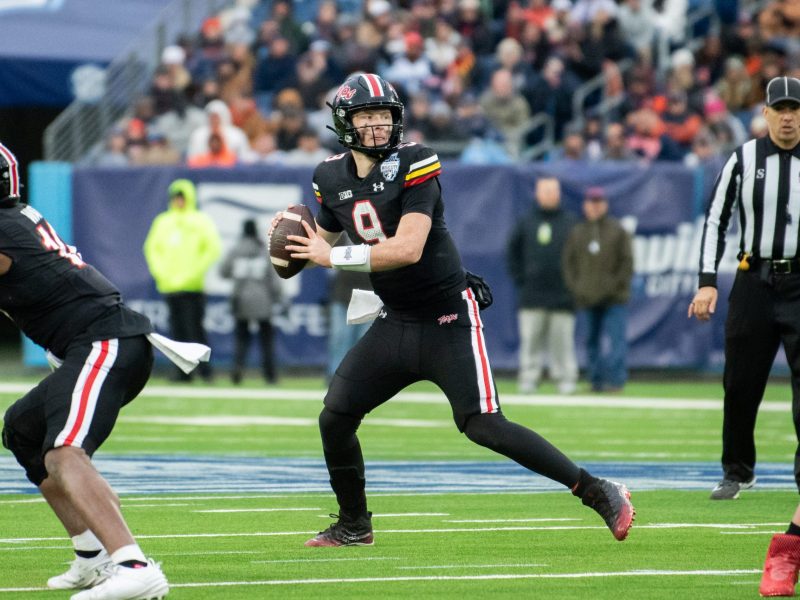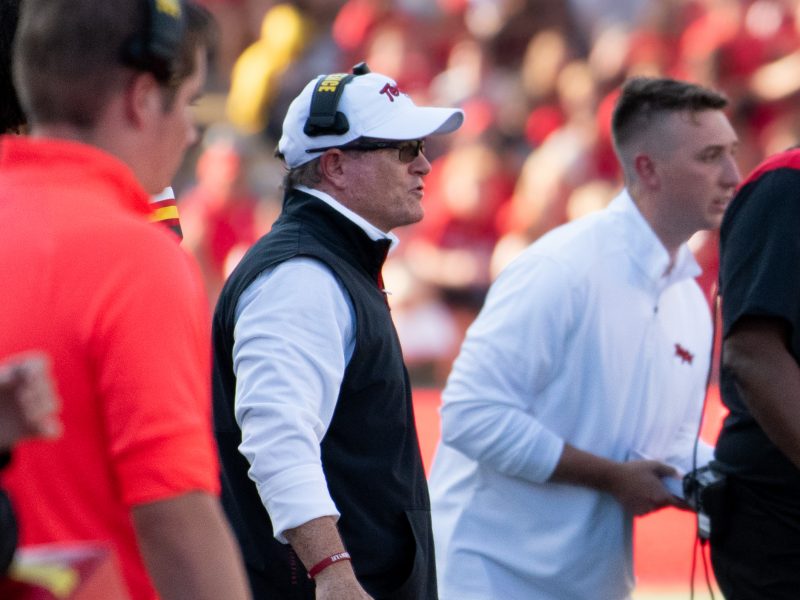The May 29 workout that Maryland football player Jordan McNair failed to recover from was the team’s first organized workout of the summer, according to records obtained by The Diamondback.
McNair, a 19-year-old rising sophomore, was hospitalized after having trouble recovering from a set of 10 110-yard sprints, according to a timeline previously released by the university. He died two weeks later. The cause of death was heatstroke, his family said.
Documents obtained by The Diamondback through public records requests shed light on the team’s plans for the May 29 workout, as well as expectations for players in the weeks leading up to it.
[Read more: 911 records indicate medics didn’t recognize severity of Jordan McNair’s condition]
A copy of the team’s workout plan for May 29 shows the 110-yard sprints — which the university has called a “baseline conditioning test” — were slated to be the first activity of summer workouts, after a standard warm-up.
The team’s training guidelines for the month of May list completion of the sprints as one of four goals it expects players to meet when they return for the first week of practice. The other three goals are weightlifting benchmarks.
The training guidelines identify different target times for the sprints depending on a player’s position. Offensive linemen and defensive tackles were expected to complete each sprint in 19 seconds, with about 60 seconds of rest between each. Running backs, receivers and defensive backs had 15 seconds to finish each run, while other positions were given 16 seconds.
[Read more: UMD reveals more information on Jordan McNair’s death, ongoing investigation]
The training schedule for the weeks leading up to May 29 was intended to keep players in shape between the end of spring practices and the beginning of summer workouts. It lays out four running workouts and four weightlifting regimens per week.
The running workouts for Mondays and Thursdays are labeled as “speed,” with increasing numbers of 20-yard sprints. Tuesdays and Fridays are “conditioning” days, which consist of running drills and sometimes include sets of 110-yard sprints.
After the period of voluntary workouts, players are expected to return to training and meet their 110-yard sprint times “with ease,” the document reads.
The team’s workout plans for May 29 through June 4 lay out the projected itinerary for the workout where McNair collapsed.
The plan shows the May 29 workout beginning with a list of exercises under the heading “Warm Up.” Each of the team’s first six workout plans begins with a similar list, typically including lunges, leg swings, abdominal conditioning and sprints at various intensities, among other exercises.
The next item on the May 29 plan is the 110-yard sprints. The time listed for linemen to complete each sprint is 19 or 20 seconds.
After the conditioning test, the players were scheduled to do position-specific drills.
The workout started about 4:15 p.m., according to the university’s timeline. At that time, the temperature in College Park was about 80 degrees with about 70 percent humidity, according to Weather Underground.
Earlier in the day, members of the team received a gallon of water. Snacks, water and Gatorade were available to them throughout the day, and lunch was also provided, according to the university’s timeline.
A team staff member called 911 at about 6 p.m. and reported McNair was “hyperventilating” and “unable to control” his breath, according to 911 records. McNair appeared to have a seizure about 10 minutes later, the records show. He was hospitalized and later would be airlifted to R Adams Cowley Shock Trauma Center in Baltimore.
On the first page of the team’s training guidelines, above the four goals for players to meet upon returning to practice, there is a list of 10 items titled the “TERRAPIN WAY OF TRAINING.” The third item on the list is “PROPER NUTRITION, REST AND RECOVERY.” It suggests players drink a gallon of water and eat four to five meals per day to maintain a proper body weight.
The university has hired Walters Inc., a sports medicine consulting firm, to conduct an external review “of all relevant policies and protocols involving student-athlete health and safety.” The review is expected to be completed by mid-September.
McNair’s family hired the Baltimore law firm Murphy, Falcon and Murphy to pursue potential legal remedy for his death. Lawyers for the firm have previously expressed doubt about the university’s investigation and timeline and bristled at coach DJ Durkin expressing confidence in his program’s safety procedures.



